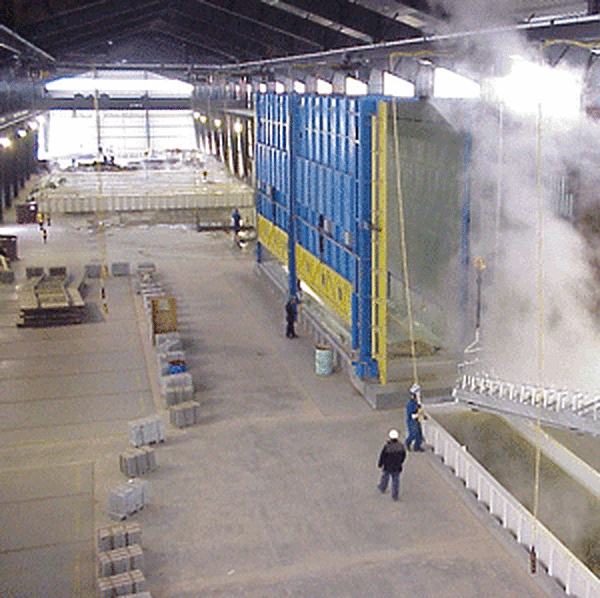Chromate Quenching
Can rebar that has cooled to ambient temperature still be chromate quenched?

ASTM A767/A767M requires galvanized rebar be chromate quenched to prevent a reaction between the galvanized coating and wet Portland cement paste. When the rebar is quenched immediately after galvanizing, meaning the temperature of the bar is still several hundred degrees Fahrenheit, the specification states bars shall be quenched in a solution containing at least 0.2 mass percent of sodium dichromate in water, or in a solution containing a minimum of 0.2% chromic acid solution. The temperature of these solutions must be at least 90 F and the bars must be left in the solution for at least 20 seconds.
When rebar has cooled to ambient temperature, slightly different requirements are necessary for chromate quenching the bars. The same solutions mentioned above are to be used; however, an addition of 0.5 to 1.0% concentration of sulfuric acid shall be added as an activator to the chromate solution. Hydrochloric acid is not permitted as an activator in place of the sulfuric acid. There is no temperature requirement of the activated chromate solution when quenching galvanized rebar at ambient temperature. For more information, please see section 4.3.2 in ASTM A 767/A 767M.
© 2025 American Galvanizers Association. The material provided herein has been developed to provide accurate and authoritative information about after-fabrication hot-dip galvanized steel. This material provides general information only and is not intended as a substitute for competent professional examination and verification as to suitability and applicability. The information provided herein is not intended as a representation or warranty on the part of the AGA. Anyone making use of this information assumes all liability arising from such use.

